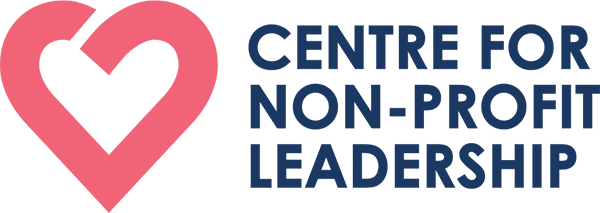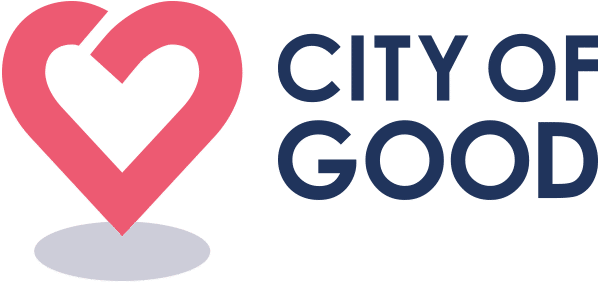To a newcomer, communities can be overwhelming — there are so many new faces, expectations, and guidelines that it can be difficult to assimilate and feel included off the bat.
As a community leader or an existing member of a community, it’s your job to welcome newcomers and show them around. Think of yourself as the host of a party. When new guests arrive, you don’t just leave them to wander around the venue by themselves — you show them where the food and drinks are and introduce them to people you think they might get along with.
In community terms, this is the onboarding process. Successful communities are not just intentional about how they select new members, but also how they onboard them.
This will make new members feel welcome, familiarise them with the community’s core purpose, clarify the commitment expected of them, and show them how to make the most of their membership within the community. Giving members an engaging first experience will also give them a good impression of your community and encourage them to participate on a regular basis.
But it’s not always that straightforward — different groups have different perspectives of the onboarding phase, informed by their organisation’s culture and by the way they view volunteers.
One thing is clear, though: there are lots of ways to welcome and onboard new members. We learned some tips and best practices from the panelists and participants of the Community Leadership Series 2021, which was held by the Community Matters team of the National Volunteer And Philanthropy Centre of Singapore.
You can watch the webinar, entitled Seed the Journey: What Makes Good Onboarding, here.
The first step in shaping the onboarding process
“When anybody is joining a new community or a new organisation, put yourself in their shoes,” says Shaily Gupta, Chief Advisor – Human Resources Consulting at Engee Advisors.
We’ve all felt the anxiety of joining a new group — attending a different school, starting a new job, joining a community of volunteers. And we’ve felt the relief wash over us when a mentor or peer reaches out to guide and even befriend us, and help us learn the ropes and nuances of the group.
Try to remember that experience when you design your onboarding process. Understand what the new joiners are anxious about and what you can do to ease their concerns at every step of their onboarding journey. “Look at every touchpoint of the new joiner and make it delightful,” says Shaily.
In her consulting practice, Shaily has distilled these concerns into three areas:
People
While some people feel comfortable talking to strangers, others need a little help. Do you have a system in place to help new members find friends in your community and build their social network?
Process
A person joins a community knowing what they can bring to the table. It’s crucial for them to understand your processes so they can determine how they can best contribute and be productive.
Performance
Skills and systems are not the only key requirements for a person to perform well. No matter what a new joiner can do, if they’re a cultural misfit, they won’t have a good experience and may end up leaving your organisation.
How different communities onboard volunteers
Emphasising the human touch
A community leaders’ mindset — how they think about volunteers — will shape the onboarding experience. Some might view volunteers as contributors who come and go, while others might consider them to be the community’s “gems,” shares Li Woon Churdboonchart, CEO and Founder of Volunteer Switchboard, a social enterprise that connects causes with people.
Communities that view volunteers as important members will pour more effort into helping them build relationships within the group and finding a cultural fit. This mindset also ensures that volunteers are treated with respect and integrity right from the start.
With that said, in a society like Singapore where efficiency is highly valued, leaders can sometimes forget to establish personal connections, diving straight into the work instead. “The human touch, though, is key to making people feel welcome and supporting them throughout the journey”, says Li Woon.
“To value the contribution your volunteers make, be sure to recognise their efforts”, advises Sparsh Deep Singh, Co-Chair, The Singapore Community (TSC) at BHP. You can do this with a simple thank you note or a gift voucher! Even a message to the volunteer’s reporting manager to highlight the individual’s selfless service would do wonders.
Setting expectations
One of the most effective things you can do during the onboarding process is to set the right expectations. By doing so, you are setting a standard within your organisation that will help you attract volunteers who are more likely to participate regularly and contribute effectively.
Sparsh believes this practice is critical to how TSC functions, as it comprises staff who lead and volunteer at various community projects. Communicating the expectations and goals clearly are equally critical to a successful onboarding process.
“AT TSC, we believe that holding purpose and operating in a selfless, service environment are our fundamental pillars. These beliefs motivate us to better serve the communities in which we operate,” says Sparsh.
“Within the TSC, each member is expected to own and lead an initiative through the financial year. Setting the right expectations and communicating them to the team at the onset is key. The members then feel a heightened sense of responsibility and purpose from the start, and that makes them stick,” added Sparsh.
Making a good first impression
Showing personal enthusiasm on day one will go a long way to making the new joiner feel welcome. Shaily suggests taking a cue from the corporate world, where if a new employee has not settled down within the first 30 or 60 days, their chances of attrition are considered to be very high.
Here are some ways to make that first touchpoint count:
- Write a personal welcome message. This is as easy as sending a WhatsApp message to welcome the person on their first day. Prepare a template that you can personalise to reflect the person’s name and role, and mention how excited you are to be working with them.
- Use a physical symbol to signify inclusion. This can be as simple as having all volunteers wear the same shirt, and making sure the new member receives the same shirt to wear on their first day. Here’s an even simpler idea: ask everyone to wear the same colour, and make sure the new joiner gets the memo.
- Invite the new member to team huddles. Brief them before on the usual meeting structure or agenda, and give them a chance to speak during the session.
- Provide onboarding information in bite-sized formats so it doesn’t become daunting. Continue to give new members more information and guidance as they go along.
Focusing on purpose
Li Woon emphasises the need to talk about the purpose of an activity, and tie this in with your community’s larger vision, values, and culture.
But some circumstances may call for a realignment of purpose. Consider the pandemic-induced restrictions on social gatherings, which have prevented many people from doing typical charity work.
The key is to reframe activities so that they align with the mission. For instance, during the pandemic, Sparsh noticed that more people were exercising at home to maintain fitness despite not being able to go outdoors. BHP’s TSC initiated a ‘Run and Ride against COVID-19 Challenge’, partnering with one of their long term community partners. For every 15 minutes of running, cycling, walking or doing any form of exercise completed by BHP staff and family members, BHP sponsored a meal in the form of a bento-box for frontline healthcare workers and the elderly who were unable to leave their premises. Click here for more information.
More onboarding best practices
During the webinar, the participants broke out into small groups to share their best onboarding experiences. Here are some of the practices they shared:
- Build 1-to-1 relationships. Have a system to connect volunteers or staff with one another. This can happen through structured pairings or group meals.You can also bring new members out for a meal or a casual chat. By improving relationships within the group (between new members, as well as between new and existing members), you promote trust and productivity.
- Have a senior member act as a “big sibling” to new members.
- Share relevant articles that explain the landscape around your cause. This way, new members will learn about pertinent issues, trends, and solutions that matter to the community.
- Involve new members in a shared experience. This can be a team-building session, a fun activity, or a small project.
- Give new members the chance to interact with other members. Try to make the onboarding session as engaging as possible. Introduce the new member to all teams (if feasible) and give them the chance to speak during meetings.
- Create an Onboarding Kit that includes relevant contact details and information, a framework of the organisation, and a calendar of events.
- Tailor the onboarding experience to each member, if possible. Taking into consideration varying personalities, onboarding could have various elements (e.g. 1-1s and large gatherings) that are optional and suited to different members.
- Help the new member feel they are connected to a larger cause and purpose. Help them see the bigger picture by sharing a presentation of the organisation’s history, milestones, and goals, and introducing them to key leaders. Get them to think about the context, such as by creating mind maps of the issues the organisation tries to address.
- Introduce members to other departments. This will allow the new member to have a better understanding of the wider community and how all things work together.
- Provide guidance on interactions. This applies to charitable activities that engage with people outside the community — for example, dialysis patients or senior citizens.
- Explain the consequences of not meeting the expectations you’ve set. This helps with offboarding members and managing inactive members.
- Train and assess the members doing the onboarding. Help them to communicate in a clear, authentic, and welcoming manner.
The community journey is not linear
Diversity and inclusion are key to the experience of the community, so you need to be thoughtful about how you welcome newcomers. The onboarding process can spell the difference between happy and engaged members and detached, inactive ones.
Still, keep in mind that onboarding is not an isolated event in the community journey. The membership journey itself is not linear; different phases affect one another. With a community being made up of individuals, communities are dynamic. This means you’ll need to revisit your onboarding processes once in a while to make sure they remain relevant and authentic.
For a structured guide to help you walk in your members’ shoes, download the Community Journey Journal for Developers here.





















